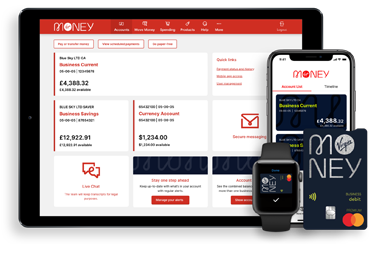Why you need an effective business plan
Your business blueprint
< back to all business news articles
02/06/2017
You wouldn’t start building a house without an architectural plan, would you? For the same reason, you should never launch a business without a business plan that lays out your ideas, goals and objectives first. A successful start-up always has a good, solid business plan behind them.

A business plan outlines your strategies. You’ll need it for finance applications, for presenting to potential investors, and as a road map for the growth of your business. It’ll give you a clear sense of direction, and act as a benchmark so you can measure your business progress.
Once you’ve hired staff and your business has been launched, it’s always a good idea to show your plan to key staff, because it’s important they’re aware of your goals. It’s a way to keep everyone on the same trajectory and working towards the same things.
Writing your business plan
A good business plan needs to be thorough but succinct. It should provide plenty of detail on your plans, but be easy to read. The process of writing your plan will help you focus and identify priorities, saving both time and effort.
To make things easier, we recommend using a business plan template rather than writing one from scratch. We’ve got one you can download.
When writing your plan, remember to:
- Describe your products and services without using technical jargon.
- Describe your market and key competitors. Include an ideal customer profile.
- Outline your marketing plans, including your position in the marketplace, your pricing strategy and key promotional ideas.
- Include a break-even analysis and a cash flow forecast.
- Mention SWOT analysis – it only needs to be one page, but it’s helpful to have identified your strengths, weaknesses, opportunities and threats.
- Include short and long term goals, and your timeline for achieving them.
It’s important to keep these aims realistic, or you could damage your business before you even get started. For example, unrealistic sales forecasts could lead to increased overheads followed by a cash flow crisis and drastic cost cutting. It can also damage your credibility, because experienced lenders and other parties can quickly see through optimistic plans that ignore weaknesses or threats.
Confirm your capacity
A key issue to consider when you’re writing your business plan is your capacity – that is, your ability to actually do or produce what you say you can. For example, if you’re planning to launch a gardening service, then you need to show that you can do the actual physical work involved, and that you have the necessary skills and experience.
If you haven’t developed a prototype of your product, now’s the time to get busy. Your plan needs to include the cost of manufacture and how much you’re intending to sell it for. And whether you’re intending to provide a service or sell a product, it’s essential that you have supplier deals in place and that you can outline them in your plan.
Review your plan regularly so you can stay on target with your goals. Don’t make the mistake of ignoring it once your business is through the start-up phase. Revising and updating your plan will keep it relevant as a roadmap for your business.
Advice and resources
- Take our online training course for creating a business plan.
- We’ve got a monthly cash flow forecast and break-even point template you can use.
- Bplans.co.uk has 5 Reasons You Need A Business Plan that’s worth checking out.
This blog is not financial advice. The content of the blog is reliable at the time of publishing, but we can’t guarantee it is entirely free from error or omission beyond our knowledge. Links are provided for you to explore, but we have no connection with third party sites or responsibility for their content.
POSTED IN: 2017,Startup
SHARE
Related Articles
You can find impartial information and guidance on money matters on the “MoneyHelper” website.
Clydesdale Bank is covered by the Financial Services Compensation Scheme (FSCS), Find out more.


